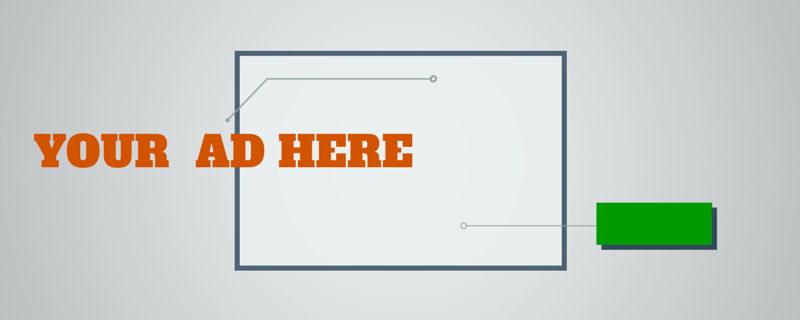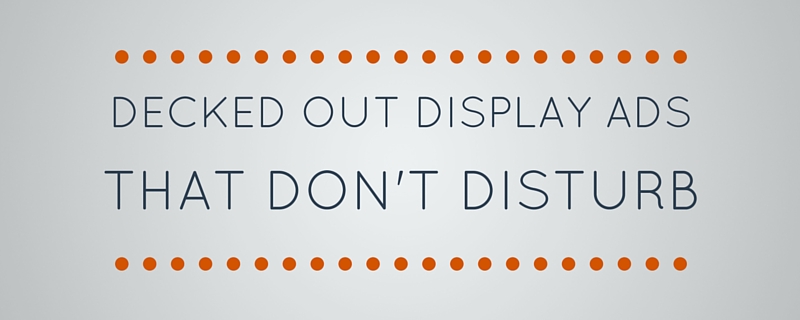BLOG
How to Create Display Ads
In their prime, display ads used to get a tonne of clicks and so many views that marketers would have no problem generating leads from a few well-placed display ads. Nowadays, however, display ads are suffering.
The problem became that because display ads were so reverently clicked on, scammers and spammers decided to take advantage of this. It became so easy to get a virus just from clicking a display ad that most people started avoiding them entirely, which is a shame because even today display ads do generate leads.
Display ads are great for marketers who are remarketing to lost leads. By showing ads to people who have left websites without making a purchase, marketers can help keep their brands in the back of a consumer’s mind long after they clicked away from the page. So marketers even offer small discounts and free trials through display ads to bring users back to the site.
If used correctly, display ads can attract leads and send them directly to your best landing pages. Want to learn to create display ads that don’t annoy people? Here’s our complete guide to design stellar display ads.

Benefits of selling benefits
When creating a display ad, you can really only focus on one aspect of your product or service. You can highlight the overall solution your product will give to the consumer’s problem. You can list a few great features about the product or service, or you can display the benefit of going with your product. For display ads, which is the best bet?
Believe it or not, focusing on the benefits of a product or service is best for display ads. Most display ads allow 10 words or sometimes even less. Don’t focus on the solution that your product provides. It’s somewhat obvious. If a viewer is getting your ads, then he or she should already have an idea about what your product does.
Emphasising a feature isn’t very effective either. Listing a few features are nice, but with so little copy allowed, you cannot accurately describe your features and how they benefits consumers.
Instead, focus on a key benefit of using a product. Sure, a degree from a higher education institution will help you land your dream job, but what other benefits does the program offer? Perhaps industry leaders teach courses, making it easier for students to network.
Simple, Simple, Simple
Have you ever come across an ad that packed at least 50 words into a very small 2 x 2 display ad? You’ve probably gotten a headache just trying to read them, and you probably didn’t even want to click on the ad at all.
Simplicity is best in display ads. State your message then leave it alone. Use quick and short sentences and blurbs to attract attention and then hit them with your message. Make your call-to-action (CTA) catchy and direct. You won’t have time for a follow-up sentence so say your peace and let the consumer decide.
Remember to keep your images simple as well. Some marketers like to make up for so few words with a few extra images. Use one image on your display ad and leave it at that. Too many ads will be difficult to see properly, and they might distract the viewer from other parts of the ad, such as the CTA.

Avoid anything that plays automatically
Have you ever been reading an article and then been knocked off your chair because music started randomly playing? More often than not, this is the work of an ad, and a truly annoying one at that. Maybe someone somewhere at some time thought display ads that play music, speak or play a video without being prompted was a good idea, but the only thing you’ll really inspire here is hate.
Avoid moving or flashing ads
While we’re on the subject for things to avoid, moving and flashing ads are definitely up there as well. These ads are incredibly distracting, but not in a good way. Ads that flash and move interrupt readers and viewers who were happily reading an article before your ad rudely made itself visible.
More than anything, it’s important to remember that bad display ads reflect poorly on your company. Outdated-looking ads show consumers that you’re not familiar with modern technology, and as such, your products and services probably aren’t either. A bad display ad may also indicate that your company doesn’t have the money to hire a competent marketer or at least an intern with the good sense to do a little research before creating a display ad.
Take note of frequency
In the case of creating touch points and increasing brand awareness, one could argue that it would be ideal to serve display ads as much as possible. However, up to a certain frequency of the ads, they do start to lack effectiveness and become obsolete.
Make sure you keep an eye on your analytics so you can set your ads to only be displayed to particular people a certain amount of times over the course of the campaign. Consider the amount of conversions that are coming through compared to the frequency of impressions. You’ll be able to see where there might be a drop off point. From there, you can ensure that ads are only served the optimal amount of times.
Test, test and test some more
As with any marketing efforts, it pays to set up split tests so you can better gauge what is working and what isn’t. Everything from button placement to copy to colours to imagery, you can create test to determine how you can better appeal to your target audience and not annoy them with your display ads.
However, in order to get better results, be sure to only test one element at a time. This way you can more accurately tell which variant is generating more conversions. Over the course of different campaigns, you should have a good idea of how you can create the most effective ads. But don’t stop testing there! There is always room to keep improving.











